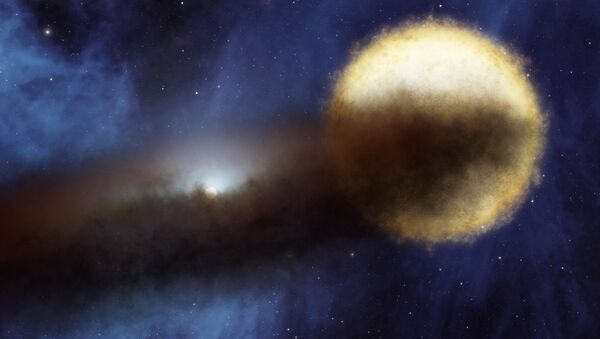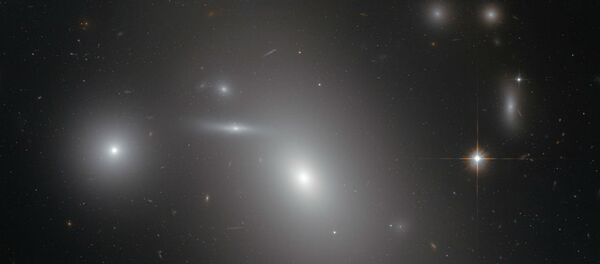"The opaque disk surrounding this hot source may be a remnant of the stripping of its former hydrogen envelope. However, it is puzzling how this object became stripped, given that it is at present so distant <…> from the current red giant primary star," the paper's abstract said.
The star is one of a few in the Milky Way galaxy to be part of a binary star system, where two stars orbit around a common center.
The TYC 2505-672-1 star has two components, a dying star called a red giant and an "older brother" which already disintegrated, dropping behind a large cloud of dust and gas.
The next eclipse in the system, which experiences them once every 70 years, is expected to occur in April 2080 and end in September 2083, according to the astronomers.


